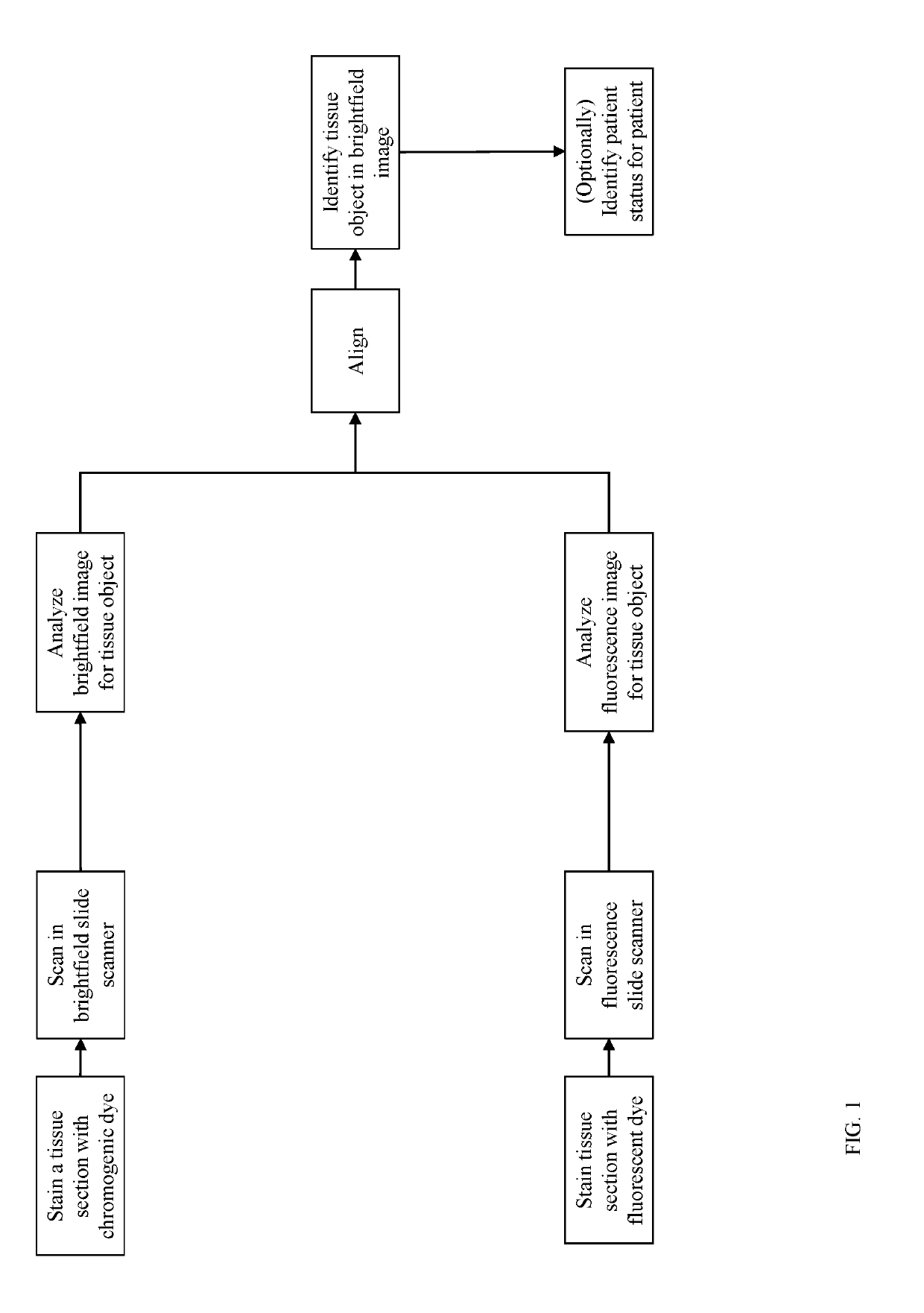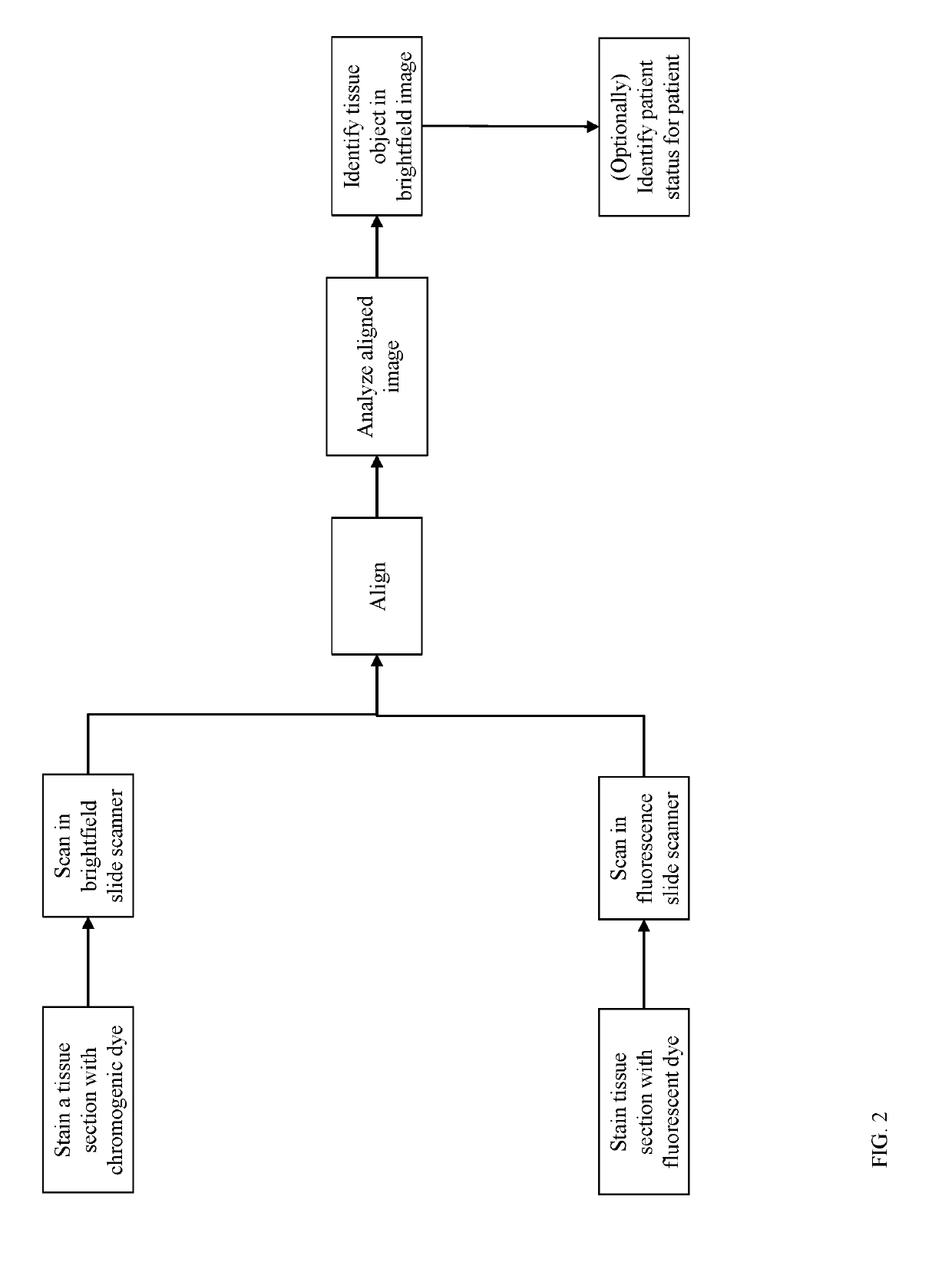Method for Identification of Tissue Objects in IHC Without Specific Staining
a tissue object and ihc technology, applied in the field of image analysis methods for the assessment of tissue samples, can solve the problems of limited information transfer scope, inconsistent method, and inconsistent alignment of alignments
- Summary
- Abstract
- Description
- Claims
- Application Information
AI Technical Summary
Benefits of technology
Problems solved by technology
Method used
Image
Examples
Embodiment Construction
[0015]In the following description, for purposes of explanation and not limitation, details and descriptions are set forth in order to provide a thorough understanding of the present invention. However, it will be apparent to those skilled in the art that the present invention may be practiced in other embodiments that depart from these details and descriptions without departing from the spirit and scope of the invention.
[0016]For purpose of definition, a tissue object is one or more of a cell (e.g., immune cell), cell sub-compartment (e.g., nucleus, cytoplasm, membrane, organelle), cell neighborhood, tissue compartment (e.g., tumor, tumor microenvironment (TME), stroma, lymphoid follicle, healthy tissue), blood vessel, and lymphatic vessel. Tissue objects are visualized by histologic stains which highlight the presence and localization of the tissue object. Tissue objects can be identified directly by stains specifically applied to highlight that tissue object (e.g., hematoxylin to...
PUM
| Property | Measurement | Unit |
|---|---|---|
| fluorescence digital image | aaaaa | aaaaa |
| fluorescence | aaaaa | aaaaa |
| fluorescent staining | aaaaa | aaaaa |
Abstract
Description
Claims
Application Information
 Login to View More
Login to View More - R&D
- Intellectual Property
- Life Sciences
- Materials
- Tech Scout
- Unparalleled Data Quality
- Higher Quality Content
- 60% Fewer Hallucinations
Browse by: Latest US Patents, China's latest patents, Technical Efficacy Thesaurus, Application Domain, Technology Topic, Popular Technical Reports.
© 2025 PatSnap. All rights reserved.Legal|Privacy policy|Modern Slavery Act Transparency Statement|Sitemap|About US| Contact US: help@patsnap.com


